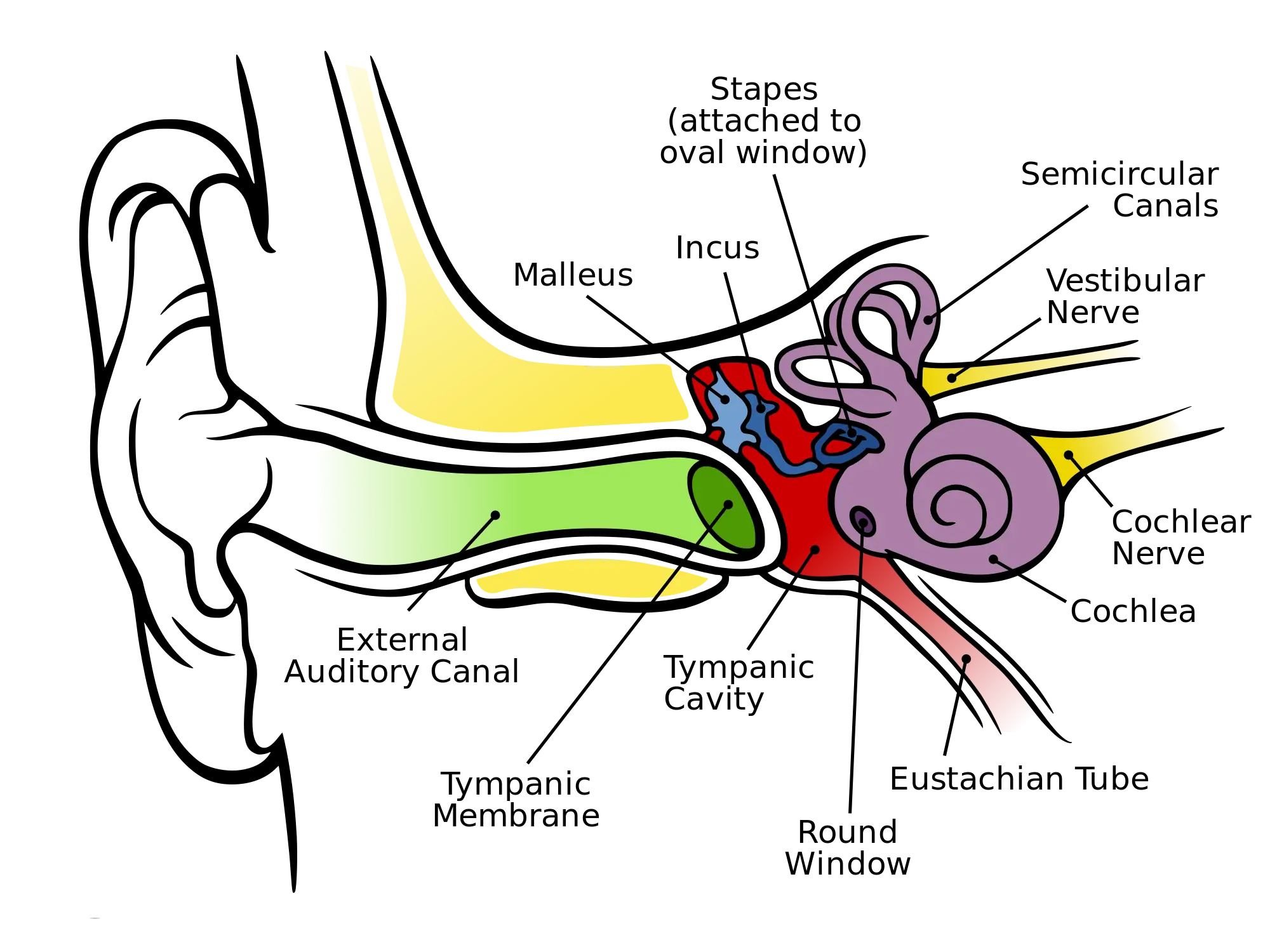How Your Hearing Works
The basics of hearing.
The ear can be divided into three parts which lead up to the brain. These are – the outer ear, middle ear and the inner ear.
The outer ear consists of the ear canal and eardrum, also know as the Tympanic Membrane. Sound travels down the ear canal, hitting the eardrum which causes it to move or vibrate.
The middle ear is a space behind the eardrum that contains three small bones called ossicles. This chain of tiny bones is connected to the eardrum at one end and next to a small window to the inner ear at the other end. Vibrations from the eardrum cause the ossicles to move which, in turn, creates movement of the fluid in the inner ear.
Movement of the fluid in the inner ear, otherwise known the cochlea, causes changes in tiny hair cells. This movement of the hair cells sends electric signals from the inner ear up the auditory nerve (also known as the hearing nerve) to the brain.
The brain then interprets these electrical signals as sound.
See below to get a full image of your hearing system.

A more technical look into your hearing system
As you can see the ear is the organ of hearing and balance. The parts of the ear include:
External or outer ear, consisting of: Pinna or auricle. This is the outside part of the ear which you can see if you were to look into the mirror.
External auditory meatus or canal. This is the path that connects the outer ear to the inside. It is also where the sound waves are pushed towards the middle ear. Tympanic membrane (eardrum). The tympanic membrane divides the external ear from the middle ear. Middle ear (tympanic cavity), consisting of: Ossicles. Three small bones that are connected and transmit the sound waves to the inner ear. The bones are called: Malleus, Incus, Stapes
Eustachian tube. A canal that links the middle ear with the back of the nose. The Eustachian tube helps to equalize the pressure in the middle ear. Equalized pressure is needed for the proper transfer of sound waves. The Eustachian tube is lined with mucous, just like the inside of the nose and throat. The Inner ear, consists of: Cochlea. This contains the nerves for hearing. Vestibule. This contains receptors for balance. Semicircular canals. This contains receptors for balance.
